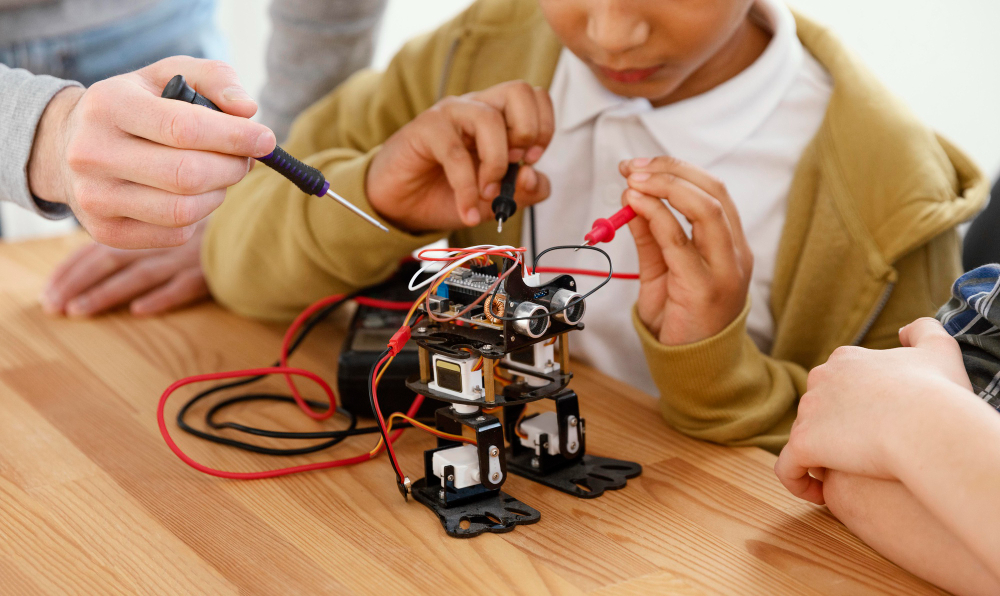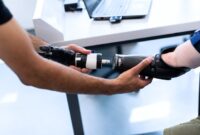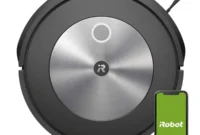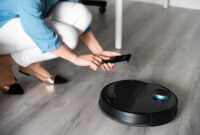The advancement of technology has paved the way for the emergence of service robots, revolutionizing various industries and enhancing the way we live and work. Service robots, also known as domestic robots or assistant robots, are designed to perform tasks autonomously or with minimal human intervention. In this article, we will explore the significance and impact of service robots in our society.

Introduction
In recent years, service robots have gained significant attention due to their potential to improve efficiency, convenience, and safety in numerous sectors. These robots are equipped with advanced sensors, artificial intelligence (AI), and machine learning algorithms, enabling them to interact with the environment and carry out tasks that were traditionally performed by humans.
Definition of Service Robots
Service robots can be defined as autonomous machines designed to assist humans in various tasks, both in domestic and professional settings. These robots are equipped with advanced sensors, artificial intelligence (AI), and machine learning algorithms, enabling them to perceive their surroundings, make decisions, and execute actions to accomplish specific goals.
Service robots differ from industrial robots, which are primarily used in manufacturing and production processes. While industrial robots are often stationary and perform repetitive tasks in controlled environments, service robots are mobile or have the ability to move around and interact with their environment. This mobility allows them to navigate in real-world settings, such as homes, hospitals, hotels, retail stores, and more.
One key characteristic of service robots is their autonomy. They are designed to operate independently or with minimal human intervention, relying on their internal programming and sensors to perform tasks. These robots can adapt to changing conditions and interact with humans and their surroundings in a safe and efficient manner.
Service robots come in various forms and sizes, depending on their intended application. They can range from small, compact robots used for household chores to larger, more complex robots employed in healthcare or logistics settings. The design and capabilities of service robots are continuously evolving, driven by advancements in robotics, AI, and sensor technologies.
Overall, service robots play a significant role in augmenting human capabilities, improving efficiency, and enhancing the quality of life. They have the potential to transform numerous industries by automating repetitive or physically demanding tasks, freeing up human resources for more complex and strategic activities.
History and Evolution of Service Robots
The history and evolution of service robots can be traced back to ancient times, where the concept of automating tasks and creating mechanical helpers first emerged. However, significant advancements in robotics and artificial intelligence (AI) technologies over the years have propelled service robots into a new era of capability and functionality.
Early examples of service robots can be seen in ancient civilizations. For instance, the ancient Greeks created automatons, mechanical devices designed to imitate human actions. These automatons were often used for entertainment purposes and were capable of performing simple tasks, such as moving or playing music.
In the 20th century, the development of robotics gained momentum. The term “robot” was coined by the Czech playwright Karel Čapek in his 1920 play, “R.U.R.” (Rossum’s Universal Robots), where robots were depicted as humanoid machines created to serve humans. This play popularized the concept of robots and introduced the idea of autonomous machines assisting in various tasks.
During the mid-20th century, robotics research and development expanded significantly. In 1954, George Devol and Joseph Engelberger introduced the first industrial robot, the Unimate, which was used for assembly line tasks in a General Motors factory. This marked a significant milestone in the field of robotics and set the stage for the future development of service robots.
As technology progressed, service robots began to take on more diverse roles. In the 1980s, service robots started to appear in research laboratories and universities, primarily focusing on tasks such as mobile navigation and manipulation. These early service robots laid the foundation for subsequent advancements in the field.
In the 21st century, service robots have become more sophisticated and capable. Advances in AI, machine learning, and sensor technologies have enabled robots to perceive their surroundings, interpret complex data, and interact with humans and their environment in a more natural and intuitive manner.
Today, service robots are utilized in various industries and settings. In healthcare, robots assist with patient care, medication delivery, and surgery. In the hospitality sector, robots are deployed for tasks like cleaning, room service, and concierge services. In retail, robots aid with inventory management and customer assistance. Additionally, service robots have applications in logistics, education, agriculture, and more.
The future of service robots holds tremendous potential. As technology continues to advance, we can expect robots to become even more capable, intelligent, and integrated into our daily lives. This includes advancements in mobility, dexterity, and human-robot interaction, allowing robots to perform a wider range of tasks and collaborate more effectively with humans.
Types of Service Robots
Service robots can be categorized into several types based on their applications and functionalities. Some common types include:
- Domestic Robots: These robots are designed to assist with household chores, such as cleaning, cooking, and gardening.
- Medical Robots: Medical robots support healthcare professionals in surgical procedures, patient care, and rehabilitation.
- Industrial Robots: Industrial robots are used in manufacturing and production lines to perform repetitive tasks with high precision and speed.
- Assistive Robots: These robots aid individuals with disabilities or older adults in their daily activities, providing companionship and assistance.
Applications of Service Robots
Service robots have found applications across various sectors, contributing to increased productivity and improved quality of life. Some notable applications include:
- Healthcare: Service robots assist in patient monitoring, medication delivery, and physical therapy, reducing the workload on healthcare staff.
- Hospitality: Robots can be employed in hotels and restaurants to handle tasks like room service, concierge services, and food delivery.
- Retail: Service robots can help with inventory management, customer assistance, and product recommendation in retail environments.
- Logistics: Robots are used for automated warehousing, package sorting, and last-mile delivery, streamlining logistics operations.
Benefits and Advantages of Service Robots
The integration of service robots offers several benefits and advantages:
- Increased Efficiency: Robots can perform tasks faster and with greater accuracy, leading to enhanced efficiency and productivity.
- Improved Safety: Service robots can undertake dangerous or hazardous tasks, minimizing the risk to human workers.
- 24/7 Availability: Unlike humans, robots do not require rest, enabling round-the-clock service and support.
- Cost Savings: Service robots can reduce operational costs in the long run by minimizing labor expenses and optimizing processes.
Challenges and Limitations of Service Robots
While service robots present numerous opportunities, they also face certain challenges and limitations:
- Technical Complexity: Developing and maintaining advanced robotic systems require specialized skills and expertise.
- High Initial Costs: The initial investment in service robots can be substantial, limiting their adoption in certain industries.
- Ethical Dilemmas: The increased reliance on robots raises ethical concerns regarding job displacement, privacy, and the impact on human social interactions.
Ethical Considerations with Service Robots
As service robots become more integrated into our lives, it is crucial to address ethical considerations. It is essential to ensure that robots are programmed to respect privacy, maintain data security, and prioritize human well-being. Additionally, guidelines and regulations should be established to govern the deployment and usage of service robots, ensuring fair practices and accountability.
Future Prospects of Service Robots
The future prospects of service robots are incredibly promising, with ongoing advancements in technology and increasing demand for automation and assistance in various sectors. Service robots are expected to play an even more significant role in shaping our society and transforming industries. Here are some key areas of future prospects for service robots:
1. Advanced Artificial Intelligence (AI) and Machine Learning (ML): The integration of advanced AI and ML algorithms will enable service robots to become more intelligent and adaptable. These technologies will enhance robots’ ability to learn from experiences, make informed decisions, and improve their performance over time. Service robots will be able to understand human commands and preferences, providing more personalized and tailored assistance.
2. Enhanced Mobility and Navigation: Future service robots will possess improved mobility, allowing them to navigate complex environments and perform tasks efficiently. Advancements in sensor technologies, such as vision systems, LIDAR, and simultaneous localization and mapping (SLAM), will enable robots to better perceive their surroundings and safely interact with humans. This will open up new opportunities for service robots to operate in a wide range of settings, including outdoor environments and public spaces.
3. Collaborative Robotics: Collaboration between humans and robots will become more seamless and intuitive. Service robots will be equipped with advanced collaborative capabilities, such as force sensing and compliant actuators, allowing them to work alongside humans in shared workspaces. These robots will assist humans in tasks that require precision, strength, or repetitive actions, leading to increased productivity and improved safety.
4. Personal and Domestic Assistance: Service robots will become more integrated into our homes, providing personalized assistance and enhancing the quality of life. They will be capable of performing various household tasks, such as cleaning, cooking, and organizing. With improved AI capabilities, service robots will learn individual preferences and adapt to specific user needs, offering personalized recommendations and proactive assistance.
5. Healthcare and Elderly Care: The healthcare sector will greatly benefit from service robots. Robots will assist in patient monitoring, medication administration, and physical therapy, reducing the workload on healthcare professionals and improving patient outcomes. In elderly care, robots will provide companionship, assist with daily activities, and help address the challenges of an aging population.
6. Customer Service and Hospitality: Service robots will continue to play a significant role in customer service and hospitality industries. They will provide assistance in hotels, restaurants, and retail stores, offering concierge services, room service, and customer support. These robots will enhance customer experiences, streamline operations, and optimize resource allocation.
7. Logistics and Delivery: Service robots will revolutionize logistics and delivery operations. Autonomous robots will be employed in warehouses and fulfillment centers for automated picking, sorting, and packaging of goods. Delivery robots will navigate urban environments to provide last-mile delivery, reducing traffic congestion and improving efficiency in e-commerce logistics.
8. Education and Research: Service robots will find applications in educational settings, assisting teachers and students in classrooms. They will facilitate interactive learning experiences, provide personalized tutoring, and support students with special needs. Service robots will also contribute to research and exploration, such as robotic assistants in scientific laboratories or space exploration missions.
As the field of robotics progresses, the future prospects of service robots are vast and diverse. With ongoing advancements in technology, we can expect service robots to become increasingly integrated into our daily lives, providing valuable assistance, improving productivity, and enhancing our overall well-being.
Conclusion
Service robots have emerged as a transformative force in various industries, revolutionizing the way tasks are accomplished and bringing numerous benefits. From enhancing productivity to improving safety and convenience, service robots have the potential to reshape our society. However, it is essential to navigate the challenges and ethical considerations associated with their integration to ensure a harmonious coexistence between humans and robots.
FAQs
- What are service robots? Service robots are autonomous machines designed to assist humans in various tasks, both in domestic and professional settings.
- What are the types of service robots? Service robots can be categorized into domestic robots, medical robots, industrial robots, and assistive robots, among others.
- What are the benefits of service robots? Service robots offer increased efficiency, improved safety, 24/7 availability, and potential cost savings.
- What are the challenges of service robots? Challenges include technical complexity, high initial costs, and ethical dilemmas surrounding job displacement and privacy concerns.
- What is the future outlook for service robots? With ongoing technological advancements, service robots are expected to become more sophisticated, adaptable, and personalized in the future.


